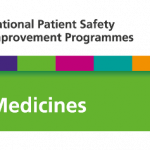Improving Patient and Staff Experience and Safety with Queue Management Software in the Emergency Department
September 23, 2019Visible queuing: a game changer in hospital emergency departments
This project will pilot a visible electronic queue management system so that patients can see where they are in the queue to be seen at any time. The team is understood to be among the first in the UK to introduce this.
The new system aims to improve patient experience and reduce the time receptionists in the Emergency Department at St George’s spend dealing with waiting time or queue position queries. Staff in Emergency Departments around the country deal with a high volume of these questions which can have a knock-on delay in booking-in new patients.
The idea for the new system came from junior doctor Dr Lindsey Bezzina who worked in the Emergency Department for a year and witnessed the problems reception teams and other staff encounter first-hand when it comes to waiting times queries. Currently, a whiteboard behind the reception desk is used to display general waiting times and updated every hour. Lack of visibility of individual positions in the queue can cause concern for patients, who can worry that they have been forgotten, passed over or missed their call to see the emergency team. This leads to repeated queries to reception staff about the waiting time and these queries are not always easy to answer due to the complexity of queues. As well as frustration for patients, these queries can occasionally result in aggressive and abusive behaviours which put additional pressure on staff.
The new system will offer people a code when they first arrive and register their details. This code will correspond with a number shown on an electronic screen, showing where the number is in the queue. The display will be visible from all parts of the waiting room and will make clear that there are multiple queues at any one time and that if someone arrives who needs more urgent care, the queue positions will move accordingly.
This means patients will be able to monitor their own position and progress in the queue, which provides assurance that they have not been missed or forgotten, reducing anxiety as well as the likelihood of aggression directed towards other patients or staff. The transparency the system will offer has the potential to educate people waiting about the multiple queues in operation at any one time, aiding understanding about the way Emergency Departments operate and why some people are seen more quickly.
The grant awarded will be used toward developing and implementing the queue management software in the Emergency Departments department. If this innovative pilot is successful and adopted as business as ususal, the software can be spread and adopted by other NHS emergency departments. There is also an opportunity for use of this system in outpatient departments at a later stage.
Find out more about our work in patient experience
Innovator Spotlight
Dr Lindsey Bezzina, Junior Clinical Fellow, Emergency Medicine, St George’s University Hospitals NHS Foundation Trust said:
“We are passionate about trying new ways to improve patient experience and safety and we believe better queue visibility will give patients reassurance and free up reception team time.
“Emergency departments are pressured and all you want is to do the best for patients. It’s difficult at the moment when we can’t easily answer their top question: when will I be seen? With relatively simple technology we believe we can make a huge difference to their experience and support staff at the same time by reducing interruptions. Greater transparency over the complex queues we operate will help everyone gain a greater understanding of how teams are working to help people.”
Share this Post





